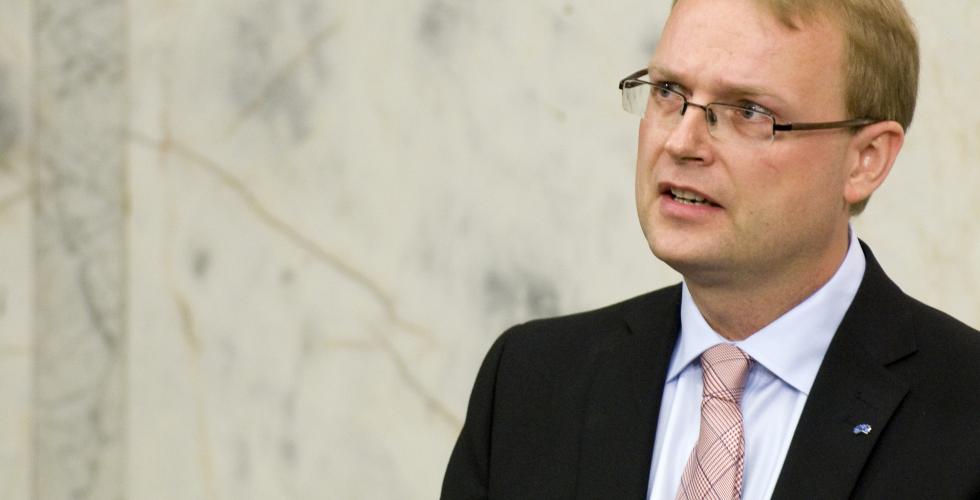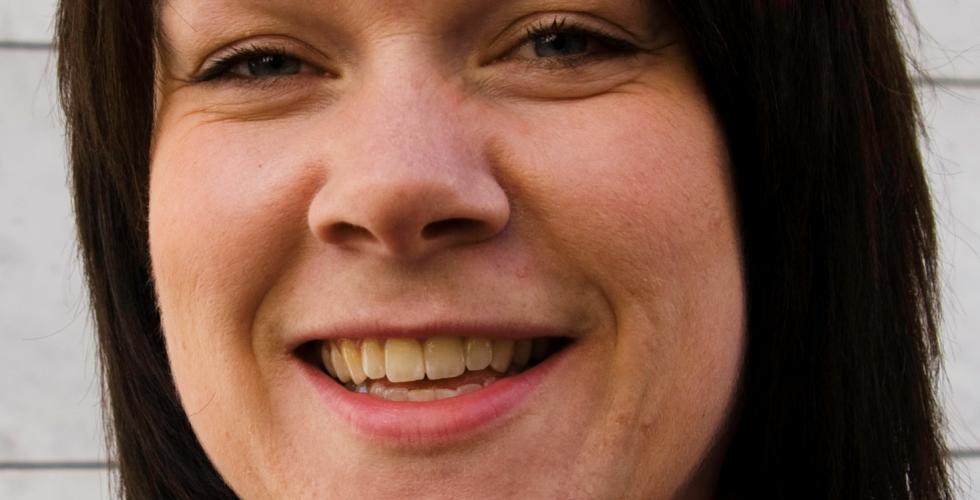“Affirmative action leads to better inclusion”
Measures to include marginalised groups are often controversial, because they are not adequately justified, according to associate professor Melina Duarte.
Gender quotas and gender points are hotly debated at universities and university colleges in Norway. Some people believe that such measures are discriminatory, while others believe they actively counteract discrimination.
Measures intended to counteract discrimination are often referred to collectively as “affirmative action”, but the terms equality measures and positive preferential treatment are also widely used in Norwegian.
In the new book “Gender Diversity, Equity, and Inclusion in Academia”, Melina Duarte writes about this very topic. She is the main editor of the book, and has drawn inspiration from her own research as coordinator of the Prestige project at UiT The Arctic University of Norway.
Gender balance with nuances
In order to realise the ambition of making academia more inclusive, the Prestige project team wanted to acquire knowledge from UiT, and looked at how gender affected career opportunities and the distribution of resources.
Although, on the face of it, UiT has a good gender balance, with more than 40 per cent female professors, Duarte says that their findings nuance this picture.
“There is a majority of women in certain disciplines that focus on care, while the STEM subjects (science, technology, engineering and mathematics) and philosophy are very male dominated. We could see clear gender segregation in the fields and little variation over time,” she says.
In addition, they found that about 40 per cent of the 196 research groups at UiT were led by women. This led the Prestige project to question whether this indicates that women have been assigned more roles in management, or whether leadership roles have become more service-oriented and less prestigious.
They found that men and women have equal organisational responsibility as group leaders, but that twice as many men report setting the agenda for group work. Men also delegate tasks to other group members to a greater extent.
In a working environment survey on perception and experience of gender discrimination, the Prestige project found that although very little gender discrimination was reported, women may feel less comfortable in groups with poor gender balance.
A final finding was that both men and women reported that they wrote applications for external funding in their spare time and have little capacity to write applications, but that women experienced less institutional support to apply for funding. This applies both to information and training in the application process, but also to the actual management of awarded projects.

Controversies surrounding preferential treatment
In her article in the book, Duarte writes about affirmative action. She defines this briefly as all measures aimed at marginalised groups, where the goal is to include them in the institutions. Such measures have often been controversial.
“People are naturally concerned with equality,” Duarte explains.
“Differential treatment can sometimes be perceived as unfair. After all, granting privileges to someone based on group affiliation can be discriminatory. What we need to convey is that affirmative action is not about giving privileges to someone who already has them, but creating equality based on equal chances to perform. We need to recognise that not everyone has the same starting point and that rules that are the same for everyone may affect people differently. Differential treatment is then needed to correct this.”
Duarte emphasises that measures should not only be used to help women, but also to get more men into disciplines where they are underrepresented:
“When we talk about feminism, the point is not to change places in a hierarchy. We want everyone to have equal status. It is therefore vital that men also take their place in the fields that are currently dominated by women, such as in care professions. Caring is not a female trait, but a human one.”
“Must be able to justify measures”
It therefore became important for Duarte to provide various justifications for the use of affirmative action. She felt that the management was reluctant to implement measures because they encountered internal resistance. UiT had a specific case related to the promotion project, which has temporarily been put on ice.
The programme helped female associate professors in the process of applying for promotion to professor, including through mentoring and buy-out from teaching.
“Some employees felt that women were being prioritised to the detriment of men from vulnerable backgrounds, or other gender minorities and ethnicities,” says Duarte.
“I thought something very important was being lost just because we wanted to avoid criticism. However, if the management is confident in the rationale for the use of affirmative action, and can defend the decision so critics accept it, the promotion project could continue, and be expanded to include more vulnerable groups instead.”
“Affirmative action stems from the knowledge that something that is made for everyone doesn't necessarily address everyone,” she says.
Legal history
There have been three main lines of justification in the field of affirmative action: the legal, the moral and the so-called business model. In the article, Duarte summarises the arguments associated with these, and highlights weaknesses in the justifications.
The legal model arose from the civil rights movement in the United States in the 1960s, when the focus was on different minority groups in academia having equal opportunities. In brief, the justification is that several laws illegally discriminate on the basis of gender, ethnicity and religion. Educational institutions are subject to the law, so when data show that certain groups are not admitted to academia, measures must be implemented.
“The legal justification lost relevance when we started making legal decisions at the international level,” Duarte explains.
“The weakness is that there are many different interpretations of concepts such as 'equality'. Among other things, this has led to the University of Oslo being sued in a European court for advertising positions earmarked for women, which was perceived as a violation of individual rights.”
She emphasises that only certain forms of gender equality measures can come under fire in such a court case, i.e. those that are result-oriented. Other forms, such as information campaigns and search committees, are not affected by the weaknesses of the legal justification.
“I think the legal justification should have been used much more than has been the case since the 1990s,” Duarte says.
In the United States, a recent Supreme Court ruling banned the use of affirmative action in universities. Duarte believes this development has been signalled for a long time.
“What has happened is that affirmative action has created a dynamic where people have become more aware of group identity.”
“The debate ended up in the public sphere and led to difficult political conditions. Many of the promises made in the 1960s have yet to be fulfilled, and groups with strong identities are demanding rapid change. Curbing the use of affirmative action because the majority group feels vulnerable will be a setback for these groups.”
Moral positions
The moral arguments in favour of gender equality measures are broader and linked to universities’ values in the public sphere. The main value, according to Duarte, is meritocracy, the idea that you should be judged on ability, and no other factors.
“Affirmative action comes into play because universities and institutions are committed to promoting certain fundamental values and ensuring that everyone has access to higher education and academic careers,” she explains.
Many different theories are used in the moral justifications. One of them is based on historical injustice, i.e. that members of a group discriminated against historically are compensated today. This applies, for example, to some indigenous peoples.
“But this position has weaknesses,” Duarte says.
“For example, that the people who are here now are not the same people who have impacted the problem historically, which can be said to be unfair.”
“That criticism doesn't necessarily spoil the argument though. We can see that privileges over time have made some groups better equipped today. No one has done anything deliberately wrong to create the current situation, but it is our responsibility to provide opportunities for those without.”
Another argument is based on social justice. The idea is that a society that is inclusive is a better society, which can be linked to values such as democracy. Yet the moral justifications are not applied to any extent.
“The way universities operate today, saying we’re creating change because it’s the right thing to do is not very effective. It has little impact on university policy. Economic arguments have the biggest impact,” Duarte says.
Academia as business
Therefore, the last justification, the business model, is the one most used today. It aims to increase the productivity and quality of knowledge production by including people from diverse backgrounds. In the United States, this has been part of the rhetoric of “bringing in talent”.
“Albert Einstein was from a minority background, so not including people from minority backgrounds means you can lose an Einstein,” Duarte explains.
“The idea is to exploit people as resources, and this works best if they represent different backgrounds. This is an effective argument for introducing changes, since all the institutions will get more publication points, more external funding and more citations per article. You can achieve that through diversity.”
The argument is seemingly strong, but Duarte points out that it leads to people from marginalised groups having to work more than others, because they have to make sure that productivity actually increases and that the group improves. If not, the argument loses its strength.
“This has already created some problems at universities,” Duarte says.
“We see cultural tension in universities with many foreign employees. Norwegian university employees used to have a balanced culture, where they could have a family, a hobby and so on.”
“Internationalisation, where people are picked who have dedicated their lives to their careers, creates tensions related to achievement. Saying that diversity is a resource that the university must use to produce more and improve puts pressure on international staff.”
“We have to start with the needs of society”
Duarte believes it is important to look at all three justifications when discussing affirmative action. Employees at educational institutions must become more aware of the weaknesses in the justifications they use, which, in the long term, could have negative consequences. She also wants them to look at more principled reasons why they should be inclusive.
“One thing we can do to dispel controversy is to disregard identity and start with the needs of society,” she says.
“We need to bring groups together that may be fragmented, and make it clear that there are several reasons for the social hierarchy that oppresses some while granting privileges to others. Many of them have a common mechanism, although each group has its own historical trajectory.”
Duarte emphasises that affirmative action is not needed in fields already marked by diversity and equality. Instead, measures should be aimed at areas where there are major imbalances.
“Affirmative action is still a very important part of inclusion efforts.”
“Without it, the work is purely symbolic. Just empty words that don’t create change. We aim for long-term change, culturally and structurally, but we forget about the generations that exist here and now, who lose many opportunities."
Editor Melina Duarte is behind the book “Gender Diversity, Equity, and Inclusion in Academia. A Conceptual Framework for Sustainable Transformation” together with co-editors Kjersti Fjørtoft and Katrin Losleben. All from UiT The Arctic University of Norway.
The researchers have investigated what concepts such as diversity, gender and integration actually mean in practice. They will communicate this knowledge to management, not only at UiT, but at all institutions of higher education.
The researchers are also affiliated with the UiT project Prestige, funded by the Research Council of Norway's Balanse programme.
Excerpts from the Equality and Anti-Discrimination Act:
Positive differential treatment on the basis of factors specified in section 6, first paragraph, is permitted if
a. the differential treatment is suited to promote the purpose of the Act
b. the negative impact of the differential treatment on the person or persons whose position will worsen is reasonably proportionate in view of the intended purpose, and
c. the differential treatment will cease when its purpose has been achieved.





